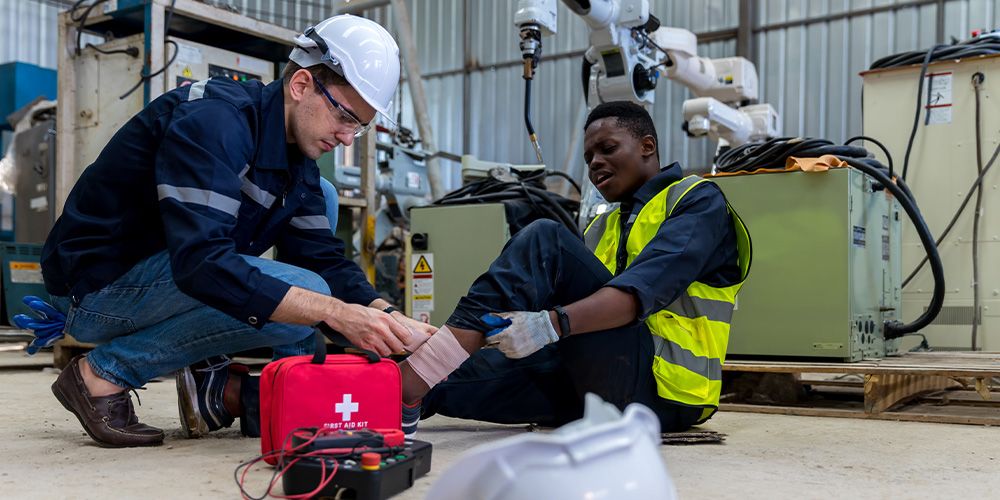Choosing the Right Footwear for Your Working Environment: A Safety Guide
|
In New Zealand, workplace injuries are a serious concern, with the majority attributed to slips, trips, and falls. ACC data shows that the choice of footwear can substantially impact your safety and play a pivotal role in preventing accidents. These incidents constitute nearly 39 percent of ACC's claims, resulting in over 770,000 falls-related claims processed each year. James Whitaker, an ACC injury prevention leader, emphasizes the importance of considering your footwear to mitigate these risks1. |
|
Workplace injuries continue to escalate in New Zealand, with data indicating a rise in workplace-related deaths and illnesses. In 2022, there were 441 workplace deaths due to injury or illness, marking an increase from 2017 when 425 workplace injuries and illnesses were reported2. The top four most frequent workplace injuries in New Zealand are:
With these sobering statistics in mind, it is paramount to understand how to select the right footwear that not only ensures your safety but also aligns with your specific work conditions. |
 |
Choosing the Right Type of ShoesWhen it comes to selecting safety shoes, a range of critical factors should be considered. Beyond personal safety concerns and the level of protection required, aesthetics and comfort play a crucial role, especially for those who will wear these shoes. It's equally important to ensure compliance with relevant safety standards and norms. For safety shoes, the EN ISO 20345:2011 standard provides criteria based on the required protection. It's essential to distinguish between safety shoes, protective shoes, and work shoes, primarily based on the presence of a toe cap:
|
Selecting the Appropriate Safety ShoesThe choice of safety shoes hinges on the level of protection required, while also considering comfort, aesthetics, and cost. Here are key criteria to guide your selection:
|
Prioritise Comfort and FitComfort is a vital consideration. Begin by determining whether employees can wear low shoes or require high shoes. Decide between leather or fabric, or explore polymeric materials for waterproofing. Keep in mind that material choice often influences the weight of the shoes, with lighter materials generally providing greater comfort. Additionally, the material used for the toe cap significantly impacts comfort. While safety shoe sizes typically run slightly larger, avoid ordering smaller sizes than usual. Manufacturers anticipate that these shoes will be worn with thick socks for improved user comfort. |
Matching Shoes to Your Work EnvironmentSafety shoes should be worn in all industries where there is a risk of foot injury. Ensuring that your footwear meets your work environment's specific requirements is crucial for safety. |
In a nutshell,Your choice of footwear is paramount in ensuring safety in the workplace. With New Zealand's escalating workplace injury statistics, it's imperative to make informed decisions when selecting safety shoes. By considering protection levels, comfort, and specific work conditions, you can significantly reduce the risk of accidents and contribute to a safer working environment. At our store, we take your safety seriously. We offer an extensive range of Blundstone and Bata Industrials Safety Footwear designed to meet your specific needs, ensuring the protection of your feet and helping you avoid injuries in your workspace. Your safety is our priority, and we are here to provide you with the right footwear solutions for a safer and more productive work experience.
|
|
1Source: www.acc.co.nz 2Source: www.dashofwellness.com |
